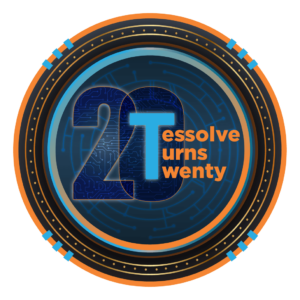Innovation in 5G technology in the automotive application industry is accelerating with IoT innovations, deployment of high-speed networks, and in-vehicle technologies. However, some crucial reasons exist for developing these technologies, such as the 5G PCB design board and hardware design.
In the world of electronics, the importance of VLSI (Very Large Scale Integration) technology cannot be overstated. VLSI physical design plays a crucial role in creating integrated chip designs that power modern devices. It involves intricate processes and algorithms that ensure the optimal performance and functionality of integrated circuits. In this blog, we will explore VLSI CAD (Computer-Aided Design) and delve deep into :
- VLSI CAD and Its Significance
- VLSI Physical Design Flow
- Current Trends in VLSI CAD
- Why Tessolve?
Understanding VLSI CAD and Its Significance
VLSI CAD came as a powerful technology that empowers engineers to create highly complex and efficient integrated chip designs, revolutionizing the development of VLSI solutions. Using CAD tools, engineers can intelligently optimize every facet of the design process, including the strategic placement and routing of components on the chip.
Moreover, VLSI CAD enables engineers to achieve remarkable advancements in reducing power consumption, pushing the boundaries of energy efficiency while enhancing overall chip performance. The utilization of VLSI CAD in the industry has significantly accelerated the pace of innovation, enabling businesses to deliver cutting-edge electronic products to market swiftly and efficiently.
VLSI Physical Design Flow
The VLSI physical design flow encompasses a set of steps that engineers follow to transform a concept into an actual integrated chip design. This flow involves multiple stages, including synthesis, floorplanning, placement, routing, and verification. Each stage has its respective algorithms and tools that aid in achieving a successful design.
Synthesis
The synthesis stage involves transforming an RTL (Register Transfer Level) design into a gate-level representation. This process utilizes algorithms to optimize the design for various parameters such as area, power, and timing.
Floorplanning
Floorplanning is the initial step that determines the overall chip layout. By placing different functional blocks, memories, and I/O pins on the chip, engineers ensure efficient communication and minimize interference between components.
Placement
Placement involves determining the positions of all the components on the chip. Algorithms are used to optimize the placement, considering factors such as area, power, timing, and signal integrity.
Routing
Routing is the process of connecting the components on the chip through metal tracks, ensuring efficient communication and signal integrity. Algorithms optimize the routing based on factors like congestion, wirelength, and electrical constraints.
Discovering Current Trends in VLSI CAD
As technology advances, new trends emerge in the VLSI CAD industry that can impact the design and verification process. Here are some of the current trends in VLSI CAD of 2023:
- Artificial Intelligence (AI): AI is making significant contributions to VLSI CAD by automating many of the tasks involved in the design and verification process. Machine learning algorithms can be used to make predictions about circuit behavior, optimize power and performance, and improve the design process overall.
- Design for Security: With cybersecurity becoming an increasingly important issue in our digital age, design for security has become a significant trend in VLSI CAD. The focus is on protecting circuits from attacks and building security features into the design itself.
- Emerging Memory Technologies: As traditional memory technologies reach their limits, emerging memory technologies such as resistive random-access memory (RRAM), magnetic random-access memory (MRAM), and phase-change random-access memory (PCRAM) are gaining popularity. These memory technologies provide advantages such as improved density and reduced power consumption, but they also require developing new CAD tools and workflows.
- 3D IC Design: Three-dimensional integrated circuits (3D ICs) are becoming more common, and CAD tools are adapting to this trend. 3D ICs have multiple layers of circuitry stacked on top of each other, which presents unique challenges for design and verification.
- Higher-Level Abstraction: With the increasing complexity of integrated circuits, designers are turning to higher-level abstraction to make the design process more manageable. High-level synthesis (HLS) tools enable designers to specify the functionality of a circuit in a high-level language, which is then automatically translated into a hardware implementation.
Why Tessolve?
The United States has been a hub for VLSI design innovation, with numerous companies and research institutions contributing to the advancement of VLSI technology. Many leading VLSI solutions and CAD tools have originated from the USA, making it an influential player in the global VLSI industry. Tessolve has established itself as a leading VLSI design in USA, and several factors contribute to its reputation as the best in the industry. First and foremost, Tessolve boasts highly skilled and experienced engineers with VLSI design expertise. This expertise allows us to craft innovative and efficient solutions for complex design challenges. We believe in the holistic approach to incorporate the latest technologies, tools, and methodologies to stay ahead of the rapidly evolving semiconductor landscape.
Conclusion
VLSI CAD has revolutionized the world of integrated chip design, enabling engineers to create complex and efficient designs with superior performance. By utilizing VLSI CAD tools and following the VLSI physical design flow, engineers can design cutting-edge integrated chip designs.
If you are also looking for semiconductor solutions, you can rely on Tessolve. As the leading VLSI engineering partner for manufacturers and semiconductor companies, we are dedicated to constantly refining our ASIC design capabilities. From the initial concept to creating flawless design specifications and faster tape-outs, we leave no stone unturned in delivering superior results.
Choose Wisely, Choose Tessolve !!



